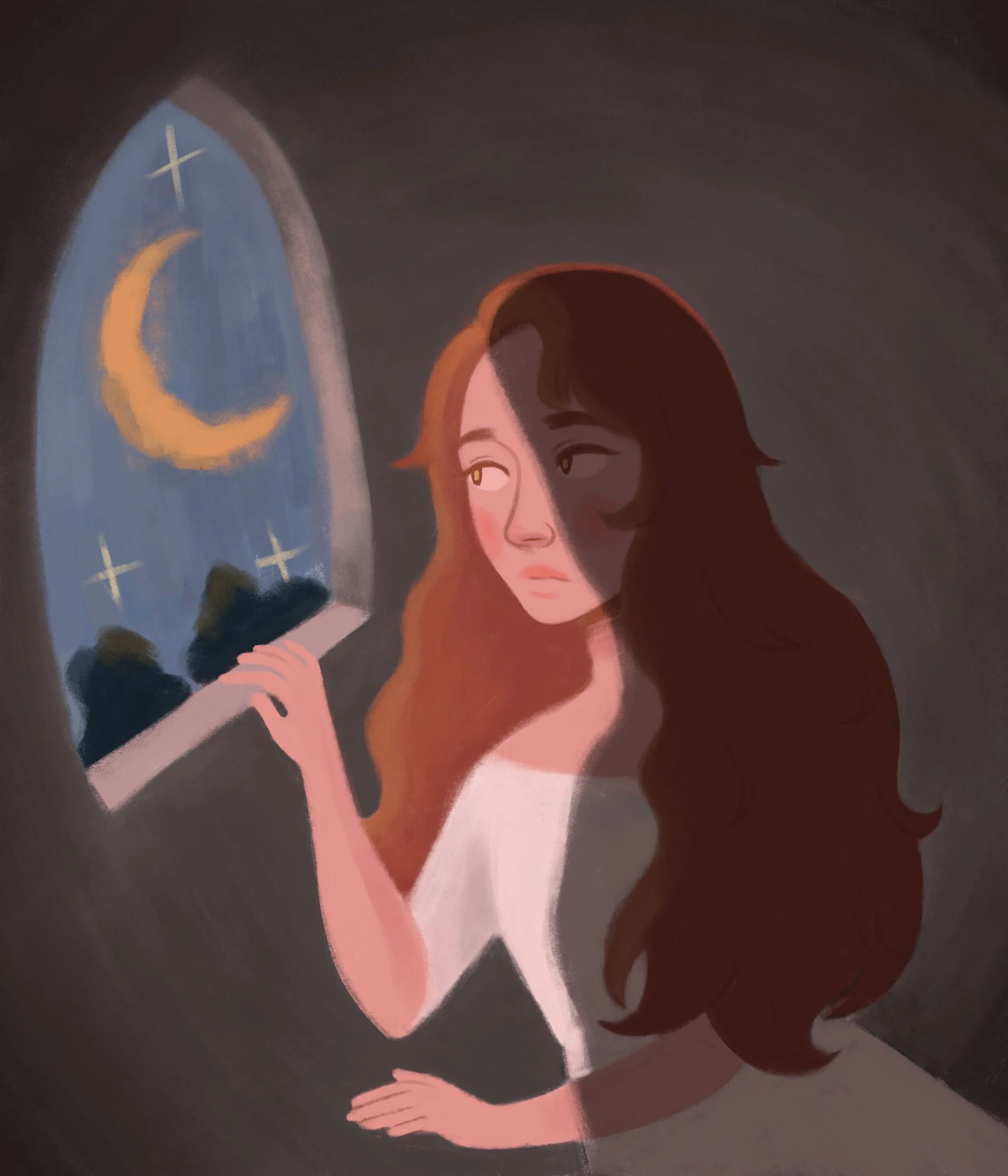The Moon and Other Stories
Illustration by Shamma O. (@hiptolazed).
For once in the history of writing, the opening sentence “since the beginning of time” will not be completely misused when I say:
Since the beginning of time, humans have been attracted by the moon.
They looked at it, they admired it and tried to give it some sense, a purpose of some kind and eventually even explored it.
In the history of the English literature, the moon is first found in the Máni, the personification of the moon, in the “Poetic Edda” by writer Snorri Sturluson. In this Old Norse mythology piece of the 13th century, Máni, the moon, is the brother of the sun, Sól. Their myth is connected to the creation and to the early days of the universe as both Máni and Sól had to find a place where they could stay forever, a place in which they belonged. Thus, they chose the sky. According to the myth, from that moment on, they journey over humankind, reminding us of the passing of time.
On the other side of the continent, Romans referred to the moon as Luna and it is not a male personification: the moon isa goddess, the female complement of the sun, Sol. The Romans adapted the myth from the Greek’s Selene, the goddess of the crescent moon, driving her chariot over the mortal world every night. She is also recounted in the “Homeric Hymns” translated into English by Percy Bysshe Shelley as “a wonder and a sign to mortal men”.
A less mythological view of the moon is the concept of “Man in the Moon”. Surprisingly, this idea is first found in the Middle Ages in the satirical poem “Mon in the Mone” by John Gower. Here, the moon is seen as a man hiding, whose exact location is unknown, whose actions are impossible to detector know for sure. Yet, he is the “slowest man on earth” as ironically it takes him a whole day to come back to where he was, rising slowly every night.
In the 20th century, the “Man in the Moon” sees a comeback as the production “Le Voyage dans la Lune” by George Méliès is released in 1902. His moon possesses a realistic human face, a light and contrast play on the possible visual interpretations of the uneven lunar surface offers.
However, in the 19th century, because of the influence of the Romantic period, the moon is interpreted by poets and writers as an exemplification of Nature’s power and silence over them is adventures and sadness humans are bound to experience. For example, Percy Bysshe Shelley in “To the Moon” (fragment) defines the moon as “the chosen sister of the Spirit” —the latter being Nature, in an idealistic approach— that gazes on you “till it pities you”.
Contemporarily speaking, American poet Emily Dickinson is also interested in the moon and describes her state as a melancholic journey towards the Sea, the Moon’s lover. Yet the Moon is distant from the Sea and although the Moon can see her reflection onto the water, the two cannot touch, but only gaze and “impose their eyes” on each other.
Dickinson’s fellow countrywoman Sylvia Plath, in the 20th century, experiences the moon as a personification of her mother, underlying the classical connections of the moon to goddesses and enigmatic figures who “see nothing of this”: of the depression, the sadness and the melancholic condition of the poet or, in general sense I have explored today, of humankind.
These are only a few examples of the many literary works and beliefs about the moon; the moon constantly inspires creative minds to think and communicate with her. These are only some of the many stories people told and always will tell about the moon.
So far, they are connected by a thin and invisible line, despite the geographical and linguistic differences and in some cases the chronological ones: all of these people one day looked up at the moon and decided to describe her, personify her and understand their own selves through her light in the darkness. ◆
Martina is a literature lover and occasional writer constantly trying to make people see the beauty of books, poetry, and the arts. Contact Martina through: martina.p.marti@gmail.com

